Let's Catch Up: How My Dog Taught Me What a 12th Century Buddha Knew About Finding Inner Peace
Reflecting on what rattled my senses last week. From museum to furry pause 🐾.
Finding peace has been my obsession ever since my divorce launched me into studying positive psychology. Before that transformation, peace felt tantalizingly elusive—I could sense its possibility, desperately wanted it, but it always seemed to hover just beyond my grasp.
Looking back with the clarity that hindsight provides, I realize I was drowning in an others-directed identity, frantically searching for peace outside myself. Now I understand the truth: peace can only be found within.
Yes, for a long time after my divorce, I thought I could find peace in a glass of wine or a bowl of pasta with slow-roasted tomatoes. I sought it in the validation I received through work achievements, or during those precious 60 minutes connecting with my body on my yoga mat or Pilates reformer. Those moments did offer fleeting glimpses of peace—but if I'm being honest, it was counterfeit peace.
So where does true peace hide? How can we find her?
Enter Bodhi.
What a cutie, right?
But wait—stay with me. I need to take you back in time before introducing you to my furry guide.
The Museum Revelation
In 2017, I went on a date—which felt wildly unpeaceful at age 50 after 25 years of marriage. He suggested we meet at the Museum of Fine Arts in Boston. We wandered through the galleries in an easy rhythm, both quietly absorbing the art—together yet separate. It felt safe. I began to relax and allow my senses to fully open.
That's when I turned and caught a glimpse of a golden statue sitting alone in the shadows at the end of the gallery. Walking closer, I came to a complete stop, overwhelmed by its profound peacefulness. I was struck by the paradox that stillness could convey such deliberate action.
Before me sat a wooden Buddha positioned as though at water's edge—one leg dangling, the other drawn up with foot planted on the ground. His skin gleamed golden, his head crowned, draped in a red skirt that curled at the hem and a green shawl cascading from his shoulders down his arms. I could almost feel the weight of the wood while simultaneously sensing the complete ease in his posture.
How was that even possible?
The inscription revealed this sculpture had been recently reinstalled after conservation. It portrayed the bodhisattva of compassion—according to Buddhism's Mahayana tradition, enlightened beings who choose to remain in the mortal realm to assist others on their spiritual journeys.
This particular bodhisattva was created in northern Jishan around 1200 CE, during a time of upheaval for the Jin dynasty. In China, this bodhisattva of compassion was known as Guanyin. His pose—gazing at the moon's reflection on water—became the traditional way of evoking Guanyin's ability to pierce through delusion's fog and see truth clearly, to step out of the endless cycle of rebirth and suffering.
This statue conveyed the profound engagement of one who sits not just still, but stilled—listening. I swear it could hear my thoughts. The bodhisattva whispered peace to me, responding to my swirling emotions without judgment or analysis. Isn't this the very act that lies at the root of compassion? And isn't compassion what ultimately leads us to peace?
My Four-Legged Bodhisattva
Which brings me back to Bodhi.
Named after my bodhisattva encounter, which I’ve visited since many times and it never disappoints. This furry bodhisattva of mine is an enlightened being who has vowed to help me—and every human he encounters—achieve fleeting but meaningful moments of enlightenment here on earth. He's not just enlightened but deeply compassionate, and I'm convinced he delayed his own liberation to guide us toward peace through his random acts of wisdom.
Just last weekend, when he sensed I needed peace to navigate a difficult transition, here's what my four-legged teacher orchestrated:
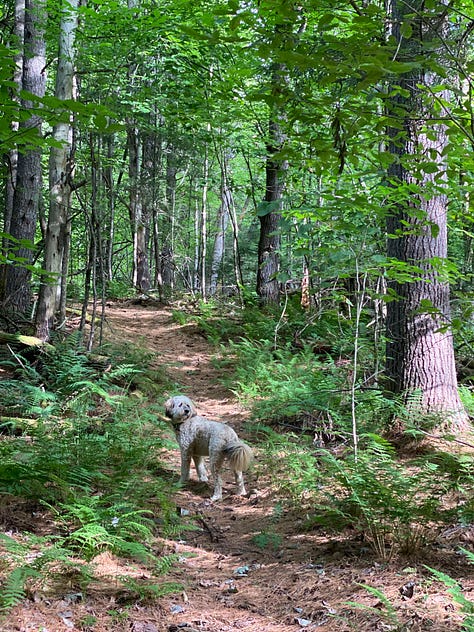
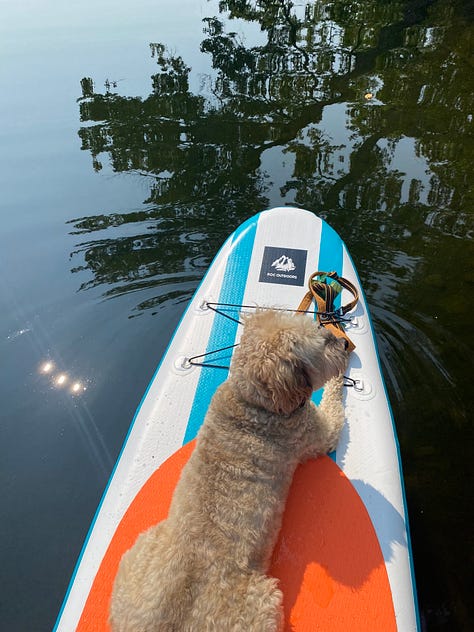
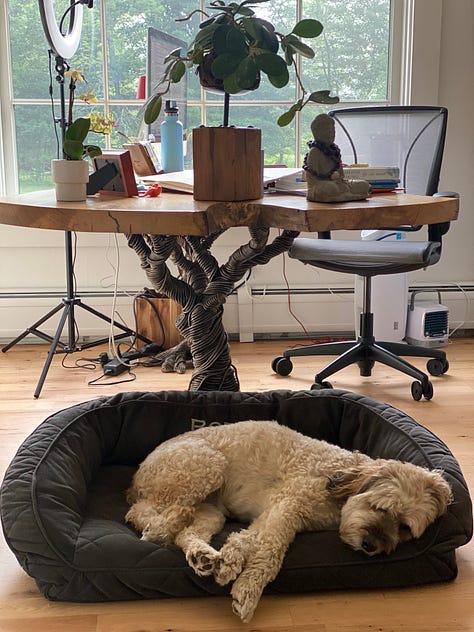
He led me on a hike through sun-dappled trails. We glided together on my paddleboard across still water. Then he rested patiently under my desk inviting me to be creative and write myself into healing.
Peace may be an inside job; however, I’ve learned there are conduits of peace that make it easier to find, to grasp, to hold onto. Sometimes you just need the right guide—even in bizarre forms carved in ancient China or covered in fur and wagging beside you.
Where are you finding peace today? Who are your bodhisattva guides?




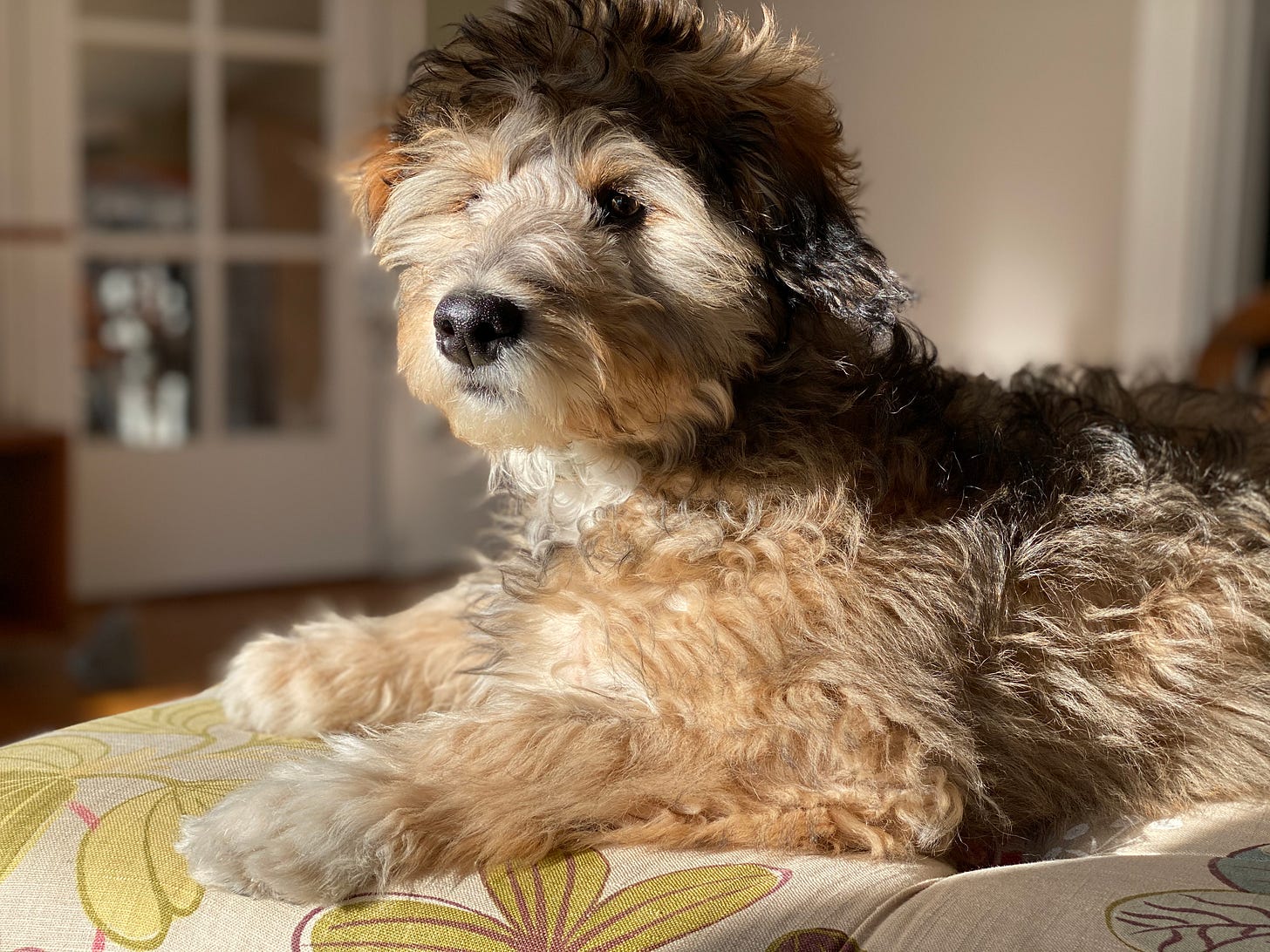
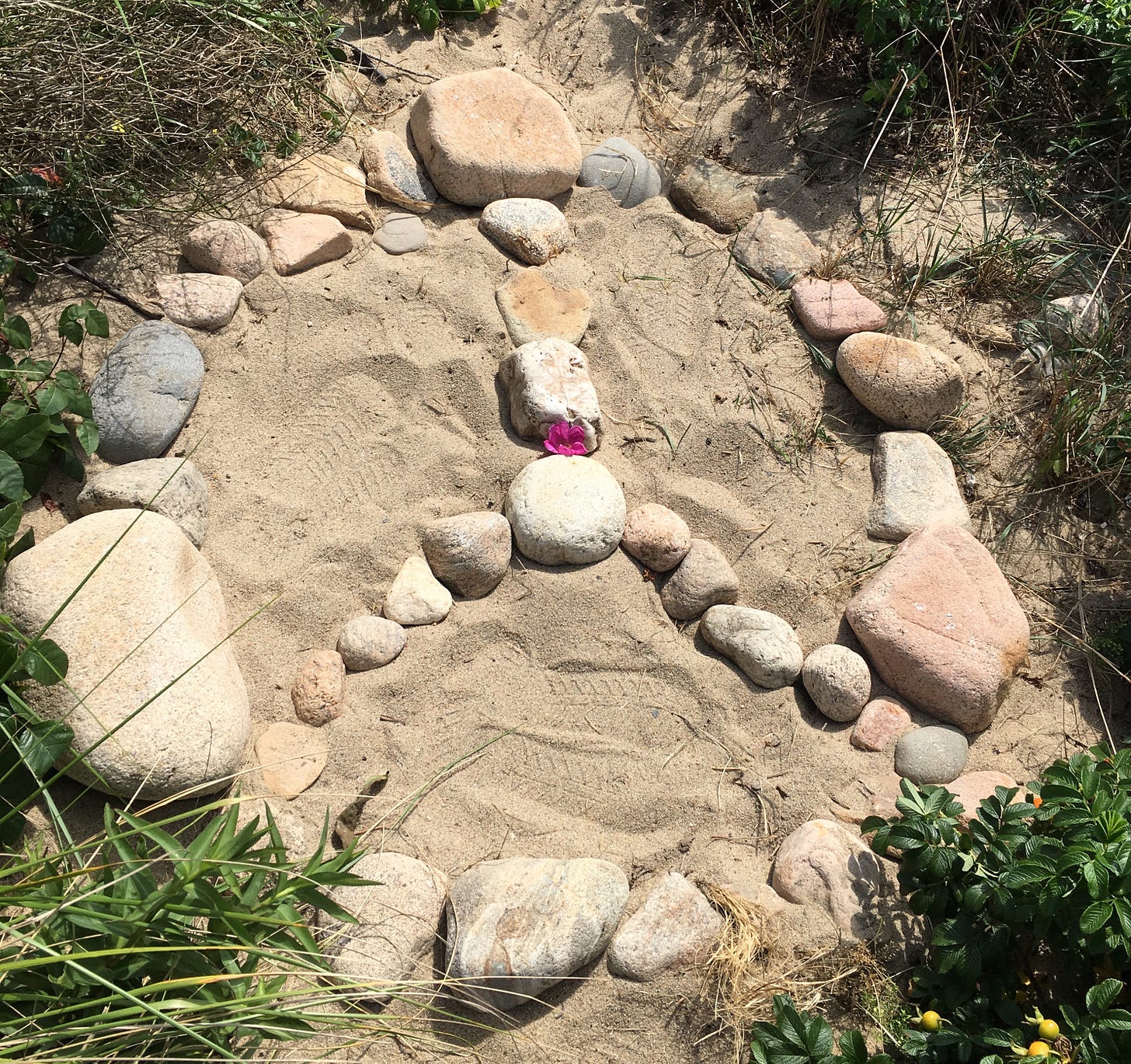

I wonder what he would write about you, Kathy? 🥰
Beautifully said, as always. I pray that someday soon you will live in the peace within you that you so ardently search for my friend!